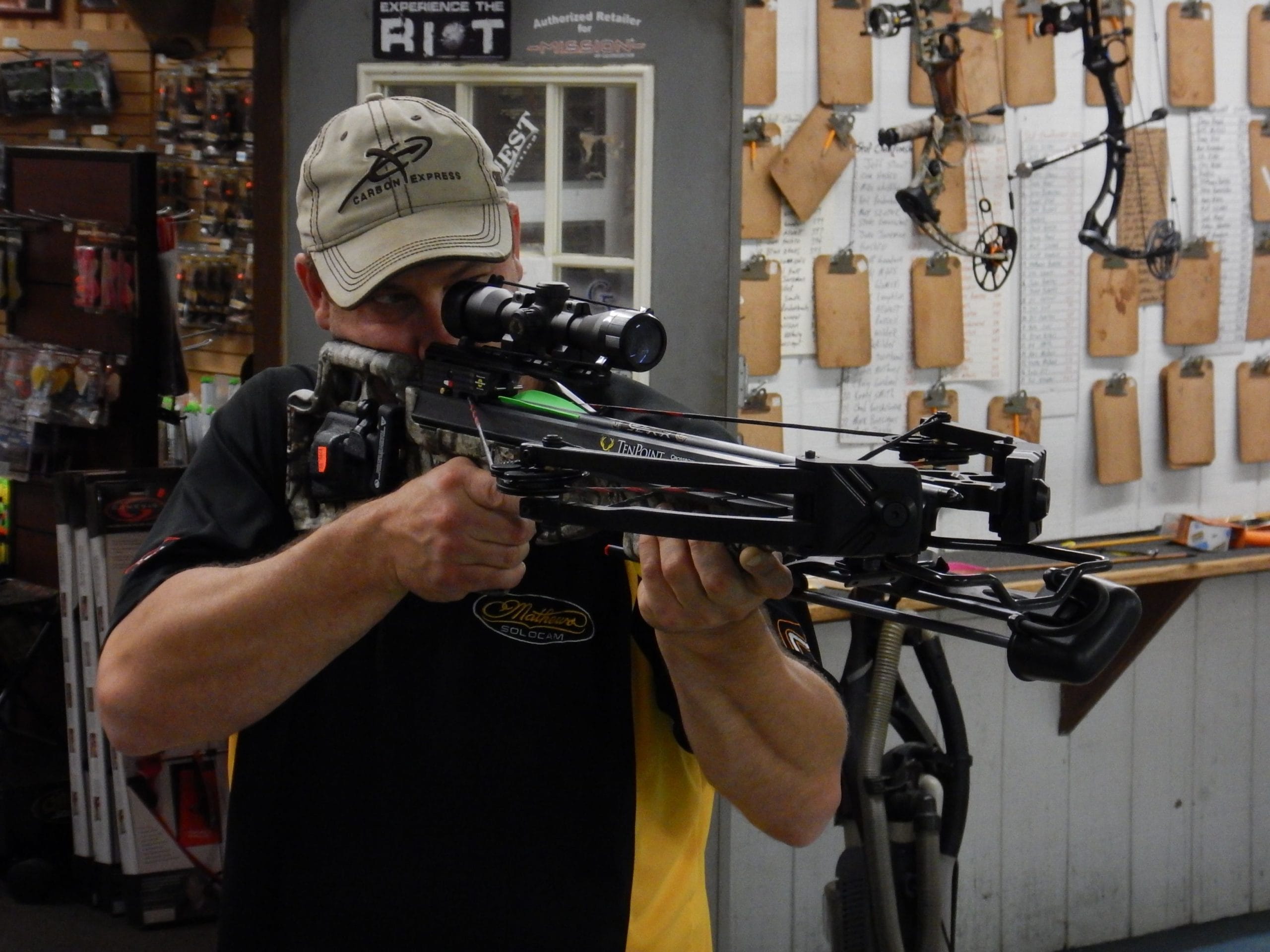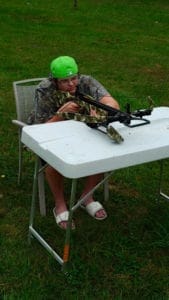by Dave Mull
An experienced deer hunter with firearms, my buddy Frank thought that a crossbow would be a simple tool to get him out deer hunting during archery seasons. He believed this simple tool could get him archery hunting without all the practice he’d need with a traditional compound bow.

Mark Kruizenga advises that although crossbows have a shorter learning curve than traditional bows for shooting accurately, hunters make a big mistake if they don’t practice with their crossbows before taking them afield.
So Frank got a crossbow and practiced diligently enough with the new weapon, which sported a nice Hawken scope. He got tight groups of bolts (what crossbow arrows are called) when shooting his block target at 20 yards.
When opening day of archery season arrived, an antsy Frank got to his ground blind in the woods well before sunup, while his hunting partner Denny heading to another part of the property. Frank’s little bait pile had been getting lots of hits the week before and his trail camera had shown at least one buck worth getting excited about. He had visions of horns on the wall and backstraps on the grill as he crouched in his blind, placing his foot in the crossbow’s cocking stirrup to get ready for a deer. But just as he strained back to get the bowstring into the latch, the stirrup slipped from the toe of his boot, and those nice visions of antlers and meat became an explosion of pink stars as the crossbow’s stock flew back and slammed him in the side of the face.
“I thought for a minute I might have hurt myself really badly,” Frank told me on a steelhead fishing trip that winter. “I’m surprised I didn’t at least need stitches—that butt stock hit me real hard.”
He was lucky to escape with just an impressive black eye—and wounded pride. Always the huckster, he unsuccessfully tried to convince Denny that the shiner came from wrestling a 6-pount buck that came back from the dead after he’d downed it that morning.
The moral of this tale is that although crossbows are easier than traditional bows to shoot with consistent accuracy, they still require a good amount of practice, especially practice that mimics your hunting situation.
“I’d never target practiced with those boots on,” says Frank. “Never tried to cock the crossbow with them on to see that the big, insulated boot didn’t fit the stirrup like my other footwear did.”
Mark Kruizenga, who has owned and operated Kruizenga’s Archery in Mattawan, Michigan for 20 years, said crossbow sales have boomed since the weapons became legal in this state for all hunters in 2009. What new crossbow hunters have in common is a need to practice, and Kruizenga outlined several steps that will help put venison on the table.
First, start shooting from a bench rest to get the feel of the trigger. Kruizenga said the trigger pull is different from a firearm, causing some shooters to flinch and miss the target altogether. This writer agrees: When I got my first crossbow three years ago, I completely buried two bolts in my backyard by starting out freehand.

New crossbow hunter Jesse Boven of Paw Paw, Michigan first gets the feel of the crossbow trigger from a makeshift bench rest. He should then take some shots freehand. His next step should be to shoot the crossbow from his deer stand.
Second, make sure to practice shooting freehand after you get comfortable with the way the weapon shoots on the bench.
“That’s probably how most deer get missed,” Kruizenga said. “Guys will get comfortable shooting from a bench but then get out in the field and haven’t practiced enough freehand.”
Third, shoot it from an elevated stand—preferably your actual deer stand.
“You don’t want your first shot from a stand to be at a deer,” Kruizenga said.
Another reason to shoot from your actual stand is to determine if there are any obstructions to your bow limbs.
“That’s how most crossbows get broken,” Kruizenga said. “A guy will rest his bow, aim at a deer and not realize a tree branch is in the way. They got to give the crossbow room to work. It flexes and hits that branch and everything goes haywire.”
Another consideration beyond practice shooting bolts is cocking the weapon—and that goes beyond my friend Frank’s painful experience. Although crossbows can be cocked by hand, it’s better to use the factory cocking rope. After I had Kruizenga mount and sight in a scope last season, I could nearly split bolts when shooting at a 30-yard target at the shop’s indoor range. When I got it home and cocked it by hand, my first shot missed the block target altogether (another bolt buried forever). Cocking it by hand can create uneven pressure on the string and cause the bolt to fly erratically. Even with the cocking rope it’s possible to cock the crossbow off center, and experts recommend marking the cocking rope in the middle to help ensure evenly cocking the bow every time.
A big decision for new crossbow hunters is the selection of a broadhead, the business end of the bolt.
“I advise getting the broadhead that the crossbow manufacturer used in its testing,” said Kruizenga.
The basic choice is between mechanical and fixed heads. Mechanical heads have blades that spring out upon impact. No matter which the hunter chooses, he or she should take some shots with that head. Kruizenga said mechanical heads generally come with a practice head that is the same shape and weight as the hunting heads, but it doesn’t expand upon impact with the practice target. With traditional broadheads, he advises shooting practice with one or two broadheads, while reserving others for shooting at game so they don’t get dull.
Yes, crossbows do provide a means for deer hunters to extend their season. They are somewhat easier to master than traditional bows and arrows, too. But to make sure you can cleanly kill a deer with one, it’s best to practice, and the closer your practice session mimics what you’ll actually face in the field, the better off you will be.
Truth be told, Frank is a fictitious name to save the real person further embarrassment. Several of his co-workers actually believe a 6-point buck did come back to life and kick his tail.
The Union Sportsmen’s Alliance website is designed to provide valuable articles about hunting, fishing and conservation for members of AFL-CIO affiliated labor unions and all sportsmen and sportswomen who appreciate hunting and fishing and want to preserve our outdoor heritage for future generations. If you would like your own story and experience from the outdoors to be considered for our website, please email us at USAmembers@unionsportsmen.org.



